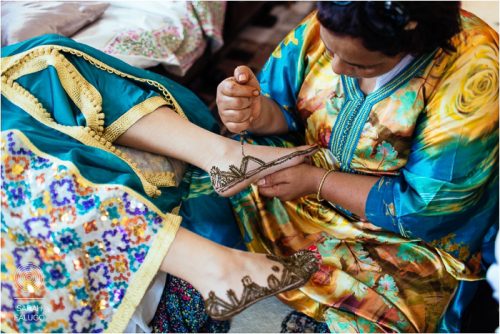No matter how far cultures travel, there is always a gap in knowledge which draws that “line” of each tradition; but the question is, not where the line is, but how many times can we cross it/ re-define it? For example, the line between Middle Eastern and Hindu weddings is often mistaken to be the same thing. So what does this week-long whirlwind entail?
The first event in Middle Eastern culture is the engagement, where the focus is primarily on the bride, meaning her appearance must be immaculate throughout the night—sometimes the bride is required to change her outfit during the event, in some areas this goes up to five different outfits. In order to welcome her into the new family, she is showered with gold jewelry and diamonds.
Next is the Mahar, which is the Middle Eastern form of legally establishing the couple through the signing of a marriage contract witnessed by a judge or Imam. Mahar celebrations are typically intimate affairs with close family, friends, and a feast. Some could compare it to the western rehearsal dinner, when you’re surrounded by the unconditional love in your life and friends that possibly know you better than yourself.
The Middle East itself is made up of many other faiths other than Islamic so, for example, if the bride is of Christian faith, then a wedding shower will take place. This is a ceremony hosted by the maid of honor or mother of the bride to celebrate the “moving away” of the bride into the next chapter of her life. She is often gifted with homeware, furniture, and other wishes that will reflect her as the “homemaker” of the family.
One of the most important elements of the Middle Eastern wedding is the “henna party”, which is a ceremony symbolizing luck, fertility and wisdom. This event is in honor of the bride, where intricate designs are applied on her hands and feet prior to the wedding. It is almost identical to the hindu “mehndi” ceremony— however it can be viewed as the Middle Eastern version of a “bachelorette” except with a family friendly atmosphere. It is a platform to unify women in the bride’s family with song, dance and food to celebrate the occasion.
Finally, the “wedding party”. This is held subsequently after the actual wedding, as once again the wedding itself is usually limited to immediate family and friends. This event can be termed as the reception, which is common in both western and hindu weddings. Usually held at a large banquet hall, where people get the chance to interact with the newlyweds, accompanied by entertainment such as a DJ or live band, food, dancing and other festivities.
So in turn, a Middle Eastern wedding, in my opinion, would be the middle ground between a Hindi and Western wedding, as it consists of ceremonies and events from each. It is a long chain of events supported by the spirited influence of family, however it is certainly not what the stereotypes project it to be.













